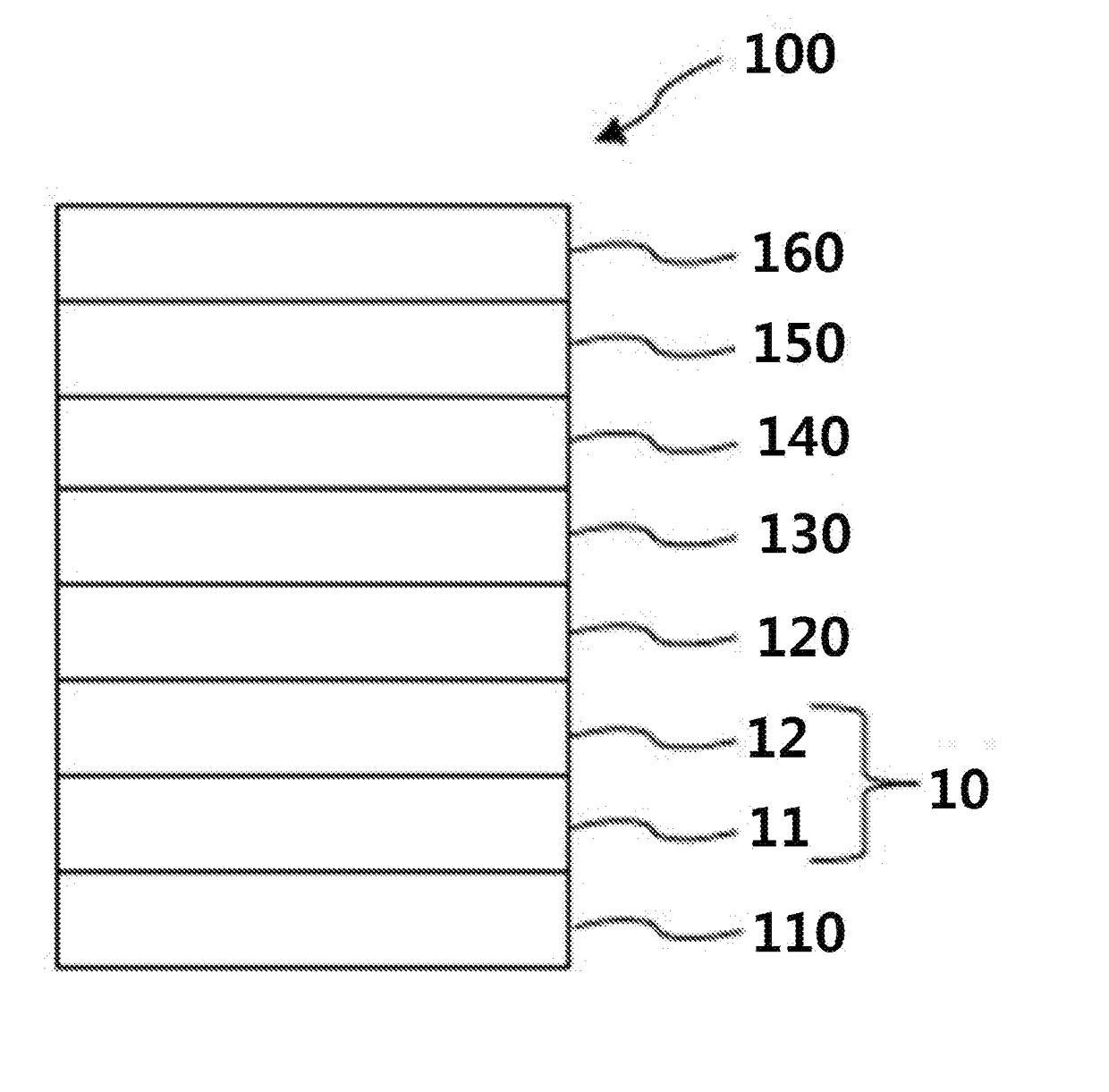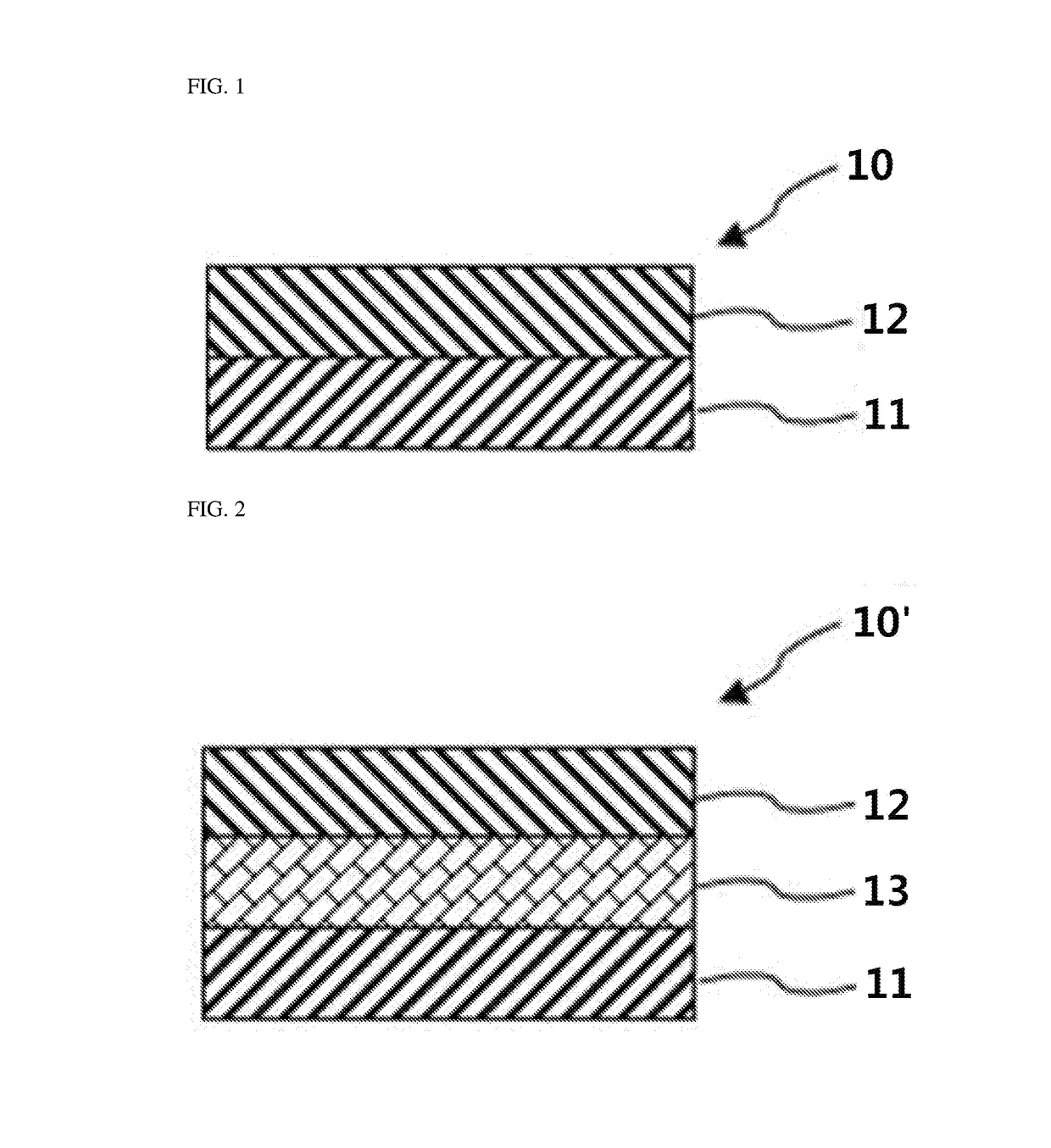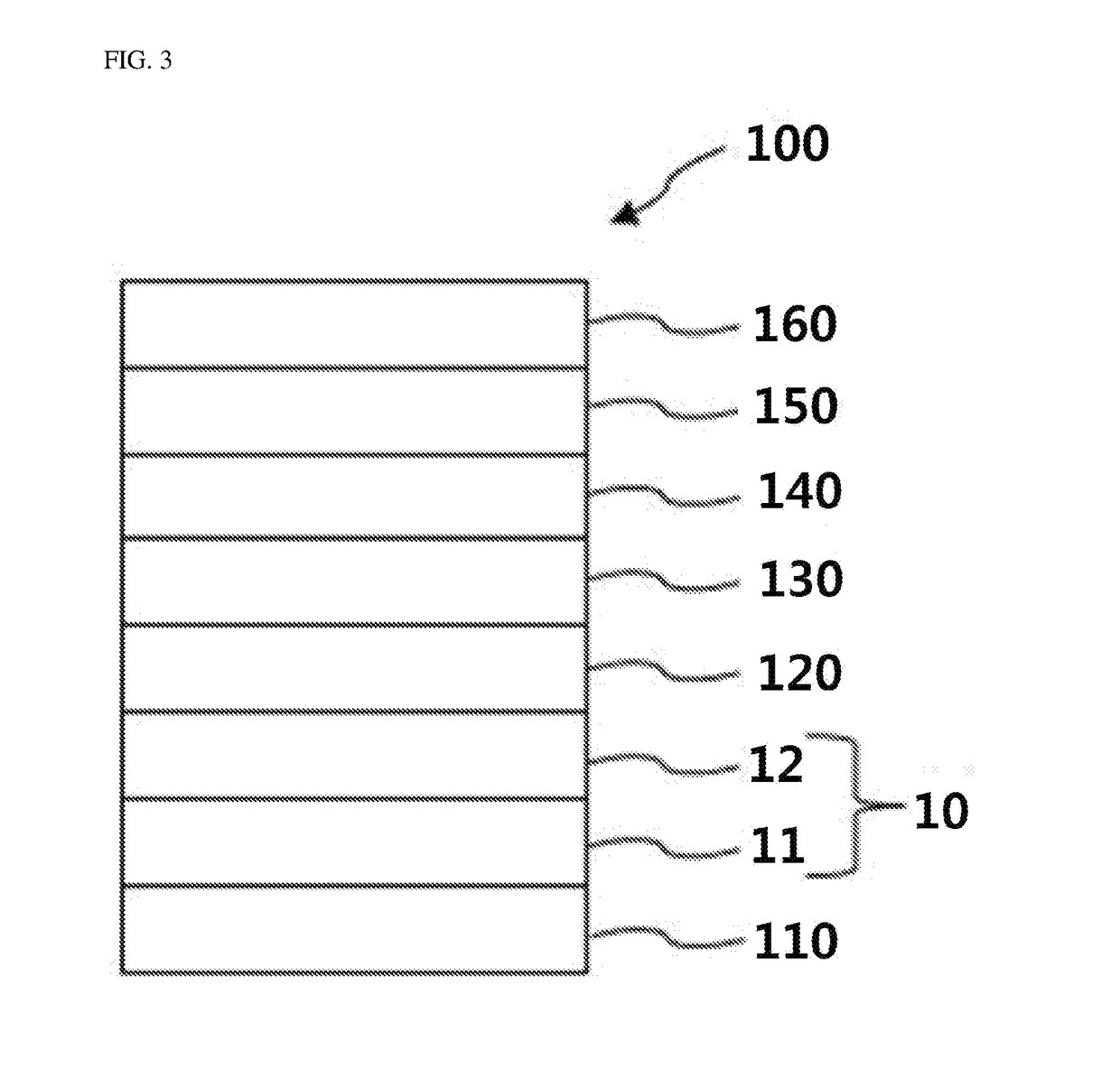Metal halide perovskite light emitting device and method of manufacturing the same
a technology of light-emitting devices and metal halide perovskite, which is applied in the direction of solid-state devices, semiconductor devices, thermoelectric devices, etc., can solve the problems of difficult adjustment of the size of quantum dots during the synthesis process, color purity may be deteriorated, and the limitation of manufacturing low-priced products of organic light-emitting diodes and inorganic quantum dots, so as to prevent the dissociation of excitons
- Summary
- Abstract
- Description
- Claims
- Application Information
AI Technical Summary
Benefits of technology
Problems solved by technology
Method used
Image
Examples
example 1
Preparative Manufacture of Conductive Layer
[0200]For a conductive layer, a mixture including a highly conductive poly(3,4-ethylenedioxythiophene):poly(styrenesulfonate) (PEDOT:PSS) solution (PH500 commercially available from H.C. Starck GmbH: having a PSS content of 2.5 parts by weight per 1 part by weight of PEDOT and a conductivity of 0.3 S / cm), a solution of the following polymer 100 (5% by weight of polymer 100 was dispersed in a mixture of water and an alcohol (water:alcohol=4.5:5.5 (v / v)); commercially available from Aldrich Co. Ltd.), and 5% by weight of dimethyl sulfoxide (DMSO) was prepared. Here, a mixing ratio of the PEDOT:PSS solution and the solution of polymer 100 was adjusted so that the content (based on solid contents) of polymer 100 per 1 part by weight of PEDOT was 1.0 parts by weight
[0201](In polymer 100, x=1,300, y=200, and z=1)
[0202]The mixture was spin-coated onto a glass substrate, and then heat-treated at 200° C. for 10 minutes to form a conductive layer 1 ...
example 2
Preparative Manufacture of First Electrode (Anode)
[0208]A solution obtained by diluting the solution of polymer 100 with isopropyl alcohol (1:10, v / v) was spin-coated onto the conductive layer 4 described in Preparative Example 1 at 4,500 rpm for 90 seconds, and then heat-treated at 150° C. for 201 nanoseconds to form a surface energy-tuning layer on the conductive layer 4, thereby manufacturing a first electrode.
example 3
Preparative Manufacture of Metal Halide Perovskite Light Emitting Device
[0209]As an anode, a first electrode was formed on a glass substrate according to the method described in Preparative Example 2, and then CH3NH3Br and PbBr2 were mixed at a ratio of 1.05:1, and 40% by weight of the resulting mixture was dissolved in dimethyl sulfoxide (DMSO). Thereafter, a CH3NH3PbBr3 solution was spin-coated to form a CH3NH3PbBr3 light emitting layer having a thickness of 300 nm.
[0210]A 50 nm-thick TPBi electron transport layer, a 1 nm-thick LiF electron injection layer, and a 100 nm-thick Al cathode (a second electrode) were sequentially formed on the CH3NH3PbBr3 light emitting layer (this was performed using a vacuum deposition method) to manufacture a metal halide perovskite light emitting device 1
PUM
| Property | Measurement | Unit |
|---|---|---|
| full width at half maximum | aaaaa | aaaaa |
| full width at half maximum | aaaaa | aaaaa |
| exciton diffusion length | aaaaa | aaaaa |
Abstract
Description
Claims
Application Information
 Login to View More
Login to View More - R&D
- Intellectual Property
- Life Sciences
- Materials
- Tech Scout
- Unparalleled Data Quality
- Higher Quality Content
- 60% Fewer Hallucinations
Browse by: Latest US Patents, China's latest patents, Technical Efficacy Thesaurus, Application Domain, Technology Topic, Popular Technical Reports.
© 2025 PatSnap. All rights reserved.Legal|Privacy policy|Modern Slavery Act Transparency Statement|Sitemap|About US| Contact US: help@patsnap.com



